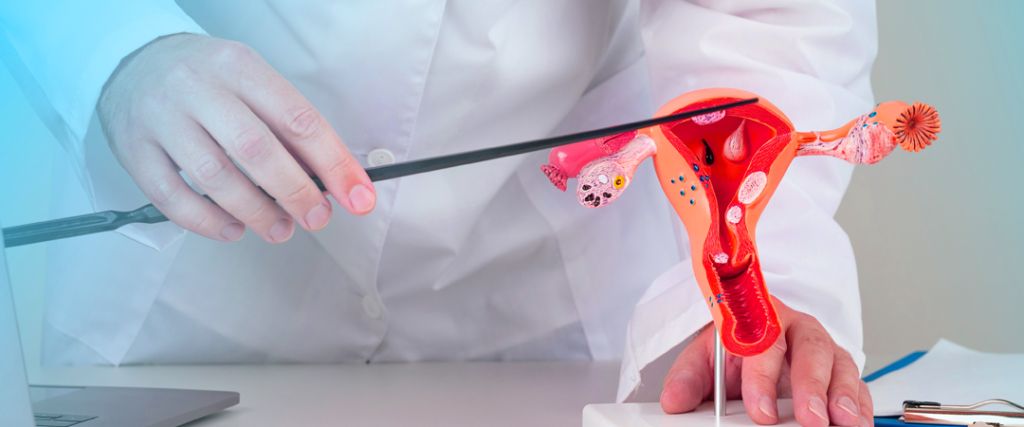
Welcome to our article on understanding endometriosis: its symptoms, causes and treatments. If you are a woman suffering from chronic pelvic pain, heavy bleeding or difficulty conceiving, you are not alone. Endometriosis is a common gynaecological condition that affects millions of women worldwide. But what exactly is endometriosis, and what are its symptoms, causes and treatments?
In this article, we take a deep dive into endometriosis to give you a complete understanding of the condition. You’ll discover the common signs and symptoms that can indicate the presence of endometriosis, as well as the risk factors that can increase your chances of developing the condition.
We will also review the theories about the causes of endometriosis, which are still poorly understood by many healthcare professionals. Finally, we will explore the treatment options available, from medication to surgery and alternative therapies.
Join us as we delve into the complex world of endometriosis and discover how to recognise, understand and manage this gynaecological condition.
WHAT IS ENDOMETRIOSIS?
Endometriosis is a condition in which the tissue that normally lines the uterus, called the endometrium, develops outside the uterus. This tissue can be found on the ovaries, fallopian tubes, ligaments that support the uterus, bladder or other pelvic organs. Each month this tissue grows bleeds and degenerates like normal endometrial tissue, but it is not eliminated from the body like menstrual blood. This can cause pain, heavy bleeding and other symptoms in women with endometriosis.
It is important to note that endometriosis can vary in severity. Some women experience mild or no symptoms, while others have severe pain and more serious complications.
Endometriosis can also affect a woman’s fertility. It is often diagnosed in women with fertility problems and can make it difficult to conceive a child naturally.
COMMON SYMPTOMS OF ENDOMETRIOSIS
The symptoms of endometriosis can vary from woman to woman, but there are some common signs to look out for. It’s important to note that these symptoms can also be present with other gynaecological conditions, so it’s important to see a doctor for an accurate diagnosis.
Common symptoms of endometriosis include:
- Chronic pelvic pain: Endometriosis-related pain can be felt in the lower abdomen, lower back and pelvic region. The pain can be severe and get worse during menstruation.
- Heavy bleeding: Women with endometriosis may experience excessive menstrual bleeding, which can lead to anaemia and increased tiredness.
- Pain during intercourse: Sexual intercourse can be painful for women with endometriosis, which can affect their quality of life and intimate relationships.
- Fertility problems: Endometriosis can make it difficult to conceive a child as it can cause problems with the fallopian tubes and changes in egg quality.
It is important to see a doctor if you have any of these symptoms. Early diagnosis of endometriosis can allow effective treatment and reduce long-term complications.

CAUSES AND RISK FACTORS FOR ENDOMETRIOSIS
Despite a lot of research, the exact causes of endometriosis are still unknown. However, there are several theories about factors that may increase the likelihood of developing the condition.
Some of the more common theories about the causes of endometriosis include:
- Menstrual retrogression: According to this theory, menstrual blood containing endometrial cells travels to the pelvic organs instead of leaving the body. These cells then implant and grow, causing endometriosis.
- Genetic factors: There is some evidence that endometriosis can be inherited. If your mother or sister has been diagnosed with the condition, you may be at higher risk of developing it.
- Altered immune system: Some research suggests that abnormalities in the immune system may allow endometrial cells to develop outside the uterus.
It is important to note that these theories are not definitive and research is ongoing to better understand the causes of endometriosis.
In terms of risk factors, some women may be more likely to develop endometriosis. These risk factors include:
- Family history of endometriosis
- Early menstruation
- Short menstrual cycle
- Late menopause
- Low body mass index (BMI)
- No previous pregnancies
- Diagnosing endometriosis
Diagnosing endometriosis can be difficult because symptoms can vary and mimic other gynaecological conditions. However, there are several diagnostic tests that are commonly used to identify endometriosis.
Medical history: Your healthcare provider will ask you questions about your symptoms, medical history, and family history. This information may help make a diagnosis.
Physical examination: Your healthcare provider will do a gynaecological exam to look for abnormalities of the uterus, ovaries, or other pelvic organs.
Medical imaging: Imaging tests such as ultrasound or MRI may be used to view the pelvic organs and look for signs of endometriosis.
Laparoscopy: Laparoscopy is a minor surgical procedure used to confirm the diagnosis of endometriosis. A small tube with a camera is inserted into the abdomen to view the pelvic organs and take tissue samples.
It is important to see a gynaecologist for an accurate diagnosis of endometriosis.
TREATMENT OPTIONS FOR ENDOMETRIOSIS
Endometriosis treatment aims to relieve symptoms, reduce long-term complications and improve quality of life for women with the condition. There are several treatment options that can be used alone or in combination.
Common treatments for endometriosis include:
Medications to manage the symptoms of endometriosis: Hormonal medications, such as oral contraceptives, progestins or GnRH agonists, can help reduce the pain and bleeding associated with endometriosis.
Surgery for endometriosis: Surgery may be recommended to remove endometriosis lesions, repair damaged pelvic organs and restore fertility. Laparoscopy is often used to perform these surgical procedures.
Lifestyle changes to help manage endometriosis: Certain lifestyle changes, such as regular exercise, a healthy diet and stress management, can help reduce the symptoms of endometriosis.
Alternative therapies for endometriosis: Some women find relief from endometriosis symptoms through alternative therapies such as acupuncture, chiropractic or physiotherapy.
It is important to talk to your doctor about which treatment options are best for you. Each woman is unique and endometriosis treatment must be tailored to her individual needs.
MEDICATIONS TO MANAGE THE SYMPTOMS OF ENDOMETRIOSIS
Living with endometriosis can be difficult, but there are many resources and support available to help you cope.
Support groups: Joining an endometriosis support group can give you a safe place to share your experiences, get advice and support from other women in the same situation.
Online resources: There are many websites and online forums dedicated to endometriosis. You can find information, advice and experiences from other women with the condition.
Education and awareness: Attending educational events about endometriosis and sharing your knowledge with those around you can help raise awareness of the condition.
Talk to a healthcare professional: Your healthcare professional can provide you with additional resources, advice and emotional support in managing endometriosis.
Remember that you are not alone in your battle with endometriosis. There is a community of women who have been there and are ready to help and support you.

SURGERY FOR ENDOMETRIOSIS
Endometriosis is a complex disease that can have a significant impact on a woman’s life. Understanding the symptoms, causes and treatments of endometriosis is essential for early diagnosis and effective management.
If you are experiencing symptoms such as chronic pelvic pain, heavy bleeding or fertility problems, it is important to see a doctor who specialises in gynaecological conditions. Early diagnosis can help you get the treatment you need to manage endometriosis effectively.
Remember, you are not alone in this battle. There are resources, support and a community of women ready to help and support you throughout your journey with endometriosis.
Take care of yourself and don’t hesitate to ask for help if you need it. Together, we can make progress in understanding and managing endometriosis.
LIFESTYLE CHANGES TO HELP MANAGE ENDOMETRIOSIS
Endometriosis can often be diagnosed using a surgical procedure called laparoscopy. During this procedure, a small instrument with a camera is inserted into the abdomen to examine the internal organs. If endometrial lesions are found, they can be removed surgically.
Surgery can help relieve the symptoms of endometriosis, including pain and heavy bleeding. However, it is important to note that surgery is not a permanent solution and the lesions may return over time. Additional treatments may be needed to effectively manage endometriosis in the long term.
It is also important to discuss the risks and benefits of surgery with your doctor before making a decision. Some women may choose a more conservative approach, using medication and alternative therapies to manage their symptoms.
SUPPORT AND RESOURCES FOR PEOPLE WITH ENDOMETRIOSIS
In addition to medical treatment, certain lifestyle changes can help manage the symptoms of endometriosis. Here are some practical tips:
Eat a balanced diet: Eat a diet rich in fruits, vegetables, whole grains and lean proteins. Avoid processed foods and foods high in saturated fats, which can increase inflammation.
Exercise regularly: Regular exercise can help reduce inflammation, relieve pain and improve mood. Try to get at least 30 minutes of moderate exercise every day, such as walking, swimming or yoga.
Stress management: Stress can make endometriosis symptoms worse. Try stress management techniques such as meditation, deep breathing or yoga to help you relax and release tension.
Getting enough sleep: Good sleep is essential for maintaining a strong immune system and promoting healing. Try to go to bed at the same time every night and establish a relaxing sleep routine.
By making these lifestyle changes, you can improve your quality of life and reduce the symptoms of endometriosis.
CONCLUSION AND FINAL THOUGHTS
Endometriosis can be isolating and difficult to live with. That’s why it’s important to find support and resources to help you along the way. Here are some options to consider:
Support groups: Join a local or online support group to meet other people with endometriosis. These groups provide a safe space to share experiences, get advice and find comfort.
Awareness organisations: There are many organisations dedicated to endometriosis awareness and education. They offer useful resources, community events and expert advice.
Individual therapy: Talking to a mental health professional can be very helpful in managing the stress, anxiety and depression associated with endometriosis. A therapist can help you develop coping strategies and overcome emotional difficulties.
Online information: Consult reliable websites and specialist blogs for up-to-date information on endometriosis. Be discerning and always check the sources to make sure the information is accurate and based on medical evidence.
Remember that you are not alone in your battle with endometriosis. There are many resources and people to support you along the way.

